Electrosafe private house and cottage. Part 4 (ending). SPD selection examples
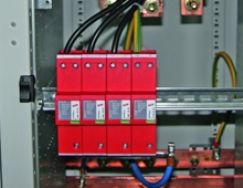 Let's first understand in more detail what we will deal with. Let's start with overvoltage impulses. For calculations and the choice of SPD, we need to know what distinguishes lightning current pulses and current pulses of all other overvoltages. The figure shows what their main difference is - the lightning current pulse is almost 17 times longer than the overvoltage pulse, that is, it has a much greater power.
Let's first understand in more detail what we will deal with. Let's start with overvoltage impulses. For calculations and the choice of SPD, we need to know what distinguishes lightning current pulses and current pulses of all other overvoltages. The figure shows what their main difference is - the lightning current pulse is almost 17 times longer than the overvoltage pulse, that is, it has a much greater power.
Next, I will list some general recommendations based on the practice of using SPDs: 1. Categorically, circuit breakers cannot be used to protect SPDs from accompanying currents. Only fuses. 2. Class 1 SPD should preferably have a monoblock design (without removable modules). 3. An SPD for a lightning current greater than 20 kA (10/350 μs) should be based on the arresters. 4. The cover in which the SPDs are installed should be metal. Now we will use the SPD selection algorithm presented below. Since when powering the house from VLI we have a grounding system ...
Sodium lamps: dominance of the tamed chemical element
 The article discusses the design and application of high-pressure sodium lamps.
The article discusses the design and application of high-pressure sodium lamps.
It is difficult today for astronomers. No matter where in the sky they are oriented by telescopes, the lines of sodium and mercury will always be present in photographs of the spectra of stars. Such spectra do not at all prove that stars are rich in these chemical elements. The reason is purely earthly: the external illumination of cities and freeways with the help of high-intensity discharge lamps creates such a strong illumination of the atmosphere that sensitive astronomical instruments capture the light of man-made “stars”.
The biggest contribution to street lighting, and the main obstacle to astronomical observations, are today high-pressure sodium discharge lamps. About them and will be discussed in this material. First of all, why exactly high pressure? The fact is that discharge tube lamps ...
Thermonuclear energy: state and prospects
 The article considers the reasons for which so far controlled thermonuclear fusion has not found industrial application.
The article considers the reasons for which so far controlled thermonuclear fusion has not found industrial application.
When powerful explosions of thermonuclear bombs shocked the Earth in the fifties of the last century, it seemed that very few were left before the peaceful use of nuclear fusion energy: one or two decades. There were reasons for such optimism: only 10 years passed from the moment the atomic bomb was used until the creation of the reactor that generated electricity.
But the task of curbing thermonuclear fusion was unusually complex. Decades passed one after another, and access to unlimited energy reserves was never obtained. During this time, humanity, burning fossil resources, polluted the atmosphere with emissions and overheated it with greenhouse gases. The disasters in Chernobyl and Fukushima-1 discredited nuclear energy. What prevented us from mastering such a promising and safe process ...
Electrosafe private residential building and cottage. Part 4. Surge Protection
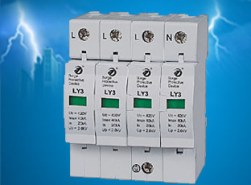 Despite the theoretical possibility of the appearance of pulsed overvoltages with an amplitude of tens of kilovolts in the 0.4 kV power supply system, the REAL value of the amplitude is limited by the pulsed insulation strength of electrical equipment.
Despite the theoretical possibility of the appearance of pulsed overvoltages with an amplitude of tens of kilovolts in the 0.4 kV power supply system, the REAL value of the amplitude is limited by the pulsed insulation strength of electrical equipment.
The impulse insulation strength of electrical equipment with a nominal voltage of 230/400 volts is set by the standard and is taken equal to 6 kV. Based on this, the appearance of voltages higher than 6 kV in electrical circuits is unlikely (the appearance of amplitudes above 6 kV is possible according to Russian scientists only in 10% of cases).
Based on this, ALL electrical equipment up to 1000 volts was divided into 4 categories (for three-phase systems 230/400 volts): category 4 is equipment that can withstand 6 kV surge voltage (electricity meters, automatic machines, arresters, etc.), category 3 is withstanding equipment ...
Integrated timer NE555 - history, design and operation
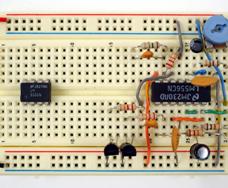 One of the legends of electronics is the NE555 integrated timer chip. It was developed back in 1972, so now in the last 2012, it turned exactly 40 years old. Such longevity is far from every chip and not even every transistor can be proud of. So what is so special about this microcircuit, which has three fives in its marking?
One of the legends of electronics is the NE555 integrated timer chip. It was developed back in 1972, so now in the last 2012, it turned exactly 40 years old. Such longevity is far from every chip and not even every transistor can be proud of. So what is so special about this microcircuit, which has three fives in its marking?
Signetics launched the serial production of NE555 exactly one year after it was developed by Hans R. Kamensind. The most amazing thing in this story was that at that time Kamensind was practically unemployed: he quit PR Mallory, but did not manage to get anywhere. In fact, it was a “homework”.
The chip saw the light of day and gained so much fame and popularity thanks to the efforts of Signetics manager Art Fury. The most interesting thing is that the microcircuit has not lost its relevance to this day ...
Transistors Part 3. What transistors are made of
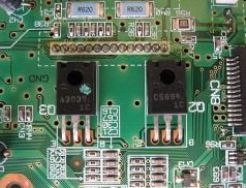 Pure semiconductors have the same amount of free electrons and holes. Such semiconductors are not used for the manufacture of semiconductor devices, as was mentioned in the previous part of the article.
Pure semiconductors have the same amount of free electrons and holes. Such semiconductors are not used for the manufacture of semiconductor devices, as was mentioned in the previous part of the article.
For the production of transistors (in this case, they also mean diodes, microcircuits, and actually all semiconductor devices) semiconductors of n and p types are used: with electronic and hole conductivity. In n-type semiconductors, electrons are the main charge carriers, and holes in p-type semiconductors.
Semiconductors with the required type of conductivity are obtained by doping (adding impurities) to pure semiconductors. The amount of these impurities is small, but the properties of the semiconductor change beyond recognition. Transistors would not be transistors if they were not used in their production ...
Electrosafe private residential building and cottage. Part 3. Lightning protection
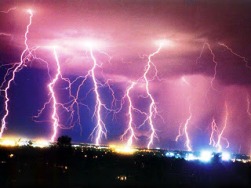 Let's start with the simplest. Suppose we have a residential building (cottage) which is powered by a power line (overhead line) and in which metal communications (gas, water supply, etc.) are not connected. We list the dangers that may await us in this case and then how to deal with them.
Let's start with the simplest. Suppose we have a residential building (cottage) which is powered by a power line (overhead line) and in which metal communications (gas, water supply, etc.) are not connected. We list the dangers that may await us in this case and then how to deal with them.
In case No. 1, a direct lightning strike can destroy the building itself, cause a fire in it, damage the electrical equipment of the house and electrical appliances included in the outlets. In this case, there is only one protective measure - the installation of external lightning protection on the house.
In case No. 2, the TV will fail, possibly igniting it. Protection measures: - installation of the antenna in the external lightning protection zone and / or disconnect the antenna cable from the TV. In case No. 3, a surge voltage of tens of kilovolts is brought into the house, which will cause damage to the electrical wiring insulation and damage to electrical appliances connected to outlets. Protective measures: turn off the power at the entrance to the house at the time of departure ...
Metal halide lamps: area of emitting metals
 The article is devoted to metal halide lamps, the features of their design, operation and application.
The article is devoted to metal halide lamps, the features of their design, operation and application.
Encountering the term “metal halide lamp”, most people have associations with an incandescent lamp, its variant with a halogen cycle. Now this is the most common misconception. Especially when, after the protests of chemists, they changed the already established name “metal halide” to “metal halide”. Without going into linguistic disputes, we agree that we will talk about one of the representatives of discharge lamps.
This representative is rather capricious, expensive and dangerous.Nevertheless, for more than four decades, such light sources have been produced by a wide range of leading lighting companies. The annual production of metal halide lamps by OSRAM alone is more than 10 million units. If we add the products of General Electric and Philips to this amount ...
